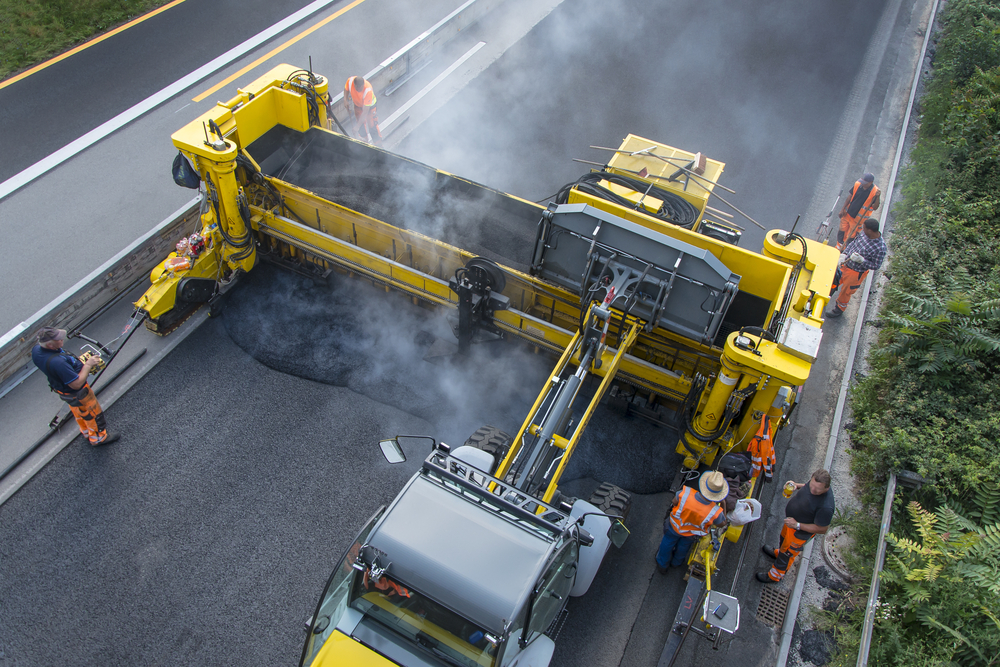A Biased View of A1 Professional Asphalt & Sealing Llc
A Biased View of A1 Professional Asphalt & Sealing Llc
Blog Article
A Biased View of A1 Professional Asphalt & Sealing Llc
Table of ContentsA1 Professional Asphalt & Sealing Llc Fundamentals ExplainedNot known Factual Statements About A1 Professional Asphalt & Sealing Llc The smart Trick of A1 Professional Asphalt & Sealing Llc That Nobody is Talking AboutThe 5-Second Trick For A1 Professional Asphalt & Sealing LlcNot known Details About A1 Professional Asphalt & Sealing Llc

The oil in an auto engine is not just oil. It has a selection of ingredients to enhance the lorry's performance. These include polymers, viscosity modifiers, warmth stabilizers, extra lubes, and use ingredients. The REOB contains all the additives that remained in the waste oil along with the wear steels from the engine (generally iron and copper).
Nonetheless, by making several blends utilizing various REOB samples and various asphalt binders, the variants largely can be balanced out. Several States offered samples of recognized REOB structure to TFHRC scientists, that examined the samples to contrast the portion of included (known) REOB to the located (checked) quantity. The evaluations revealed a similar portion of included and discovered REOB.
All about A1 Professional Asphalt & Sealing Llc
They received a frustrating action. The TFHRC scientists assessed 1,532 samples from 40 States, one Canadian district, and 2 Government Lands Freeway departments. They examined each sample twiceamounting to greater than 3,000 evaluations. None of those States understood that the asphalt they were getting included REOB. One State urged its samples had no REOB.
Of the 1,532 examples checked, 12 percent had REOB, and some consisted of significantly high degrees of it at 1020 percent. The highest possible degree was 34 percent in a sample from Texas, which TxDOT had actually made use of in a patching substance. This testing also exposed the presence of phosphoric acid in 11 percent of the samples, and 2 percent contained ground tire rubber.
Two years ago at TRB's annual conference, the Federal scientists held an REOB workshop and offered the searchings for of their laboratory examinations to a standing room-only crowd. Some companies do not particularly ban REOB, they do impose physical tests that prevent its useeffectively a ban. Others do not prohibit it by requirements, however have agreements with asphalt providers to stay clear of using REOB
Some Ideas on A1 Professional Asphalt & Sealing Llc You Need To Know
A handful do allow REOB, some within certain limitations. For example, Ohio and Texas restriction degrees to less than 5 percent of the asphalt. To develop a reliable test approach that all States can make use of, the TFHRC researchers established a round-robin test plan. The participants are 11 State highway companies (Illinois, Massachusetts, Minnesota, Mississippi, Montana, North Carolina, Oklahoma, South Carolina, Texas, Vermont, and Wyoming), 2 independent testing labs, the Ministry of Transport in Ontario, Queen's University in Ontario, and an Ontario paving professional.
In total, the scientists prepared and delivered 720 blends. The participants are evaluating the samples individually utilizing the standards offered by the TFHRC researchers. The round-robin testing is nearly completed, and TFHRC remains in the procedure of accumulating the results. The outcome will be a suggested AASHTO test method that any State can embrace and make use of (asphalt repairs).
The sidewalk with REOB, which lies 0.6 mile (1 kilometer) from the pavement without REOB, has similar subgrade, web traffic density, and environment. Nevertheless, the segment of Highway655 with 5 to 10 percent REOB revealed significant breaking. In this instance, the visibility of REOB was the identified cause of splitting at a low temperature levels.
A section of test pavement in Minnesota (MN1-4) discovered to contain REOB additionally split too soon. The sidewalk performed well for the first 3 to 4 years, but after that started to crack.
Unknown Facts About A1 Professional Asphalt & Sealing Llc
The examinations were not extensive, however they showed that at degrees of 6 percent or more, the tensile toughness of the asphalt dropped significantly. At a degree of 3.5 percent REOB, the variation in the physical examination approaches was more than the effect of REOB. It was tough for scientists to evaluate whether REOB was existing. https://www.storeboard.com/a1professionalasphaltandsealingllc.

One binder specification thought about is the distinction between the reduced temperature vital requirements temperature for rigidity (S) in the flexing beam rheometer and the flexing beam of light rheometer creep incline (m-value) kept in mind as Tcritical. TC = TC (S) TC (m-value). Examination of this specification is still ongoing. 2 independent research teams, one from AASHTO and the other from the Asphalt Institute, ended that more research is required on the use of REOB in asphalt.
Formerly, all asphalt screening determined engineering properties such as stiffness. These examinations do disappoint what products had been contributed to the asphalt. One sample received throughout the TFHRC study had an extremely unusual analysis. The sample had the following test results: Superpave PG 64-28 with a high temperature level quality of 67.3 Tcritical on the bending light beam rheometer was 6.7 levels Celsius.

What Does A1 Professional Asphalt & Sealing Llc Do?
These outcomes demonstrate there are weaknesses in the standard engineering screening methods that might be exploited. The manufacturer might have an economic advantage and the product passes all the standardized tests, but the item may not be valuable to making sure lasting efficiency. To resolve this problem and the expansion of new asphalt additives and extenders, TFHRC is starting a research program to use portable spectroscopic tools, x-ray fluorescence spectroscopy, and Fourier transform infrared spectroscopy to make visit the site it possible for evaluations to be carried out in the area instead of having to take samples back to the laboratory.
Report this page